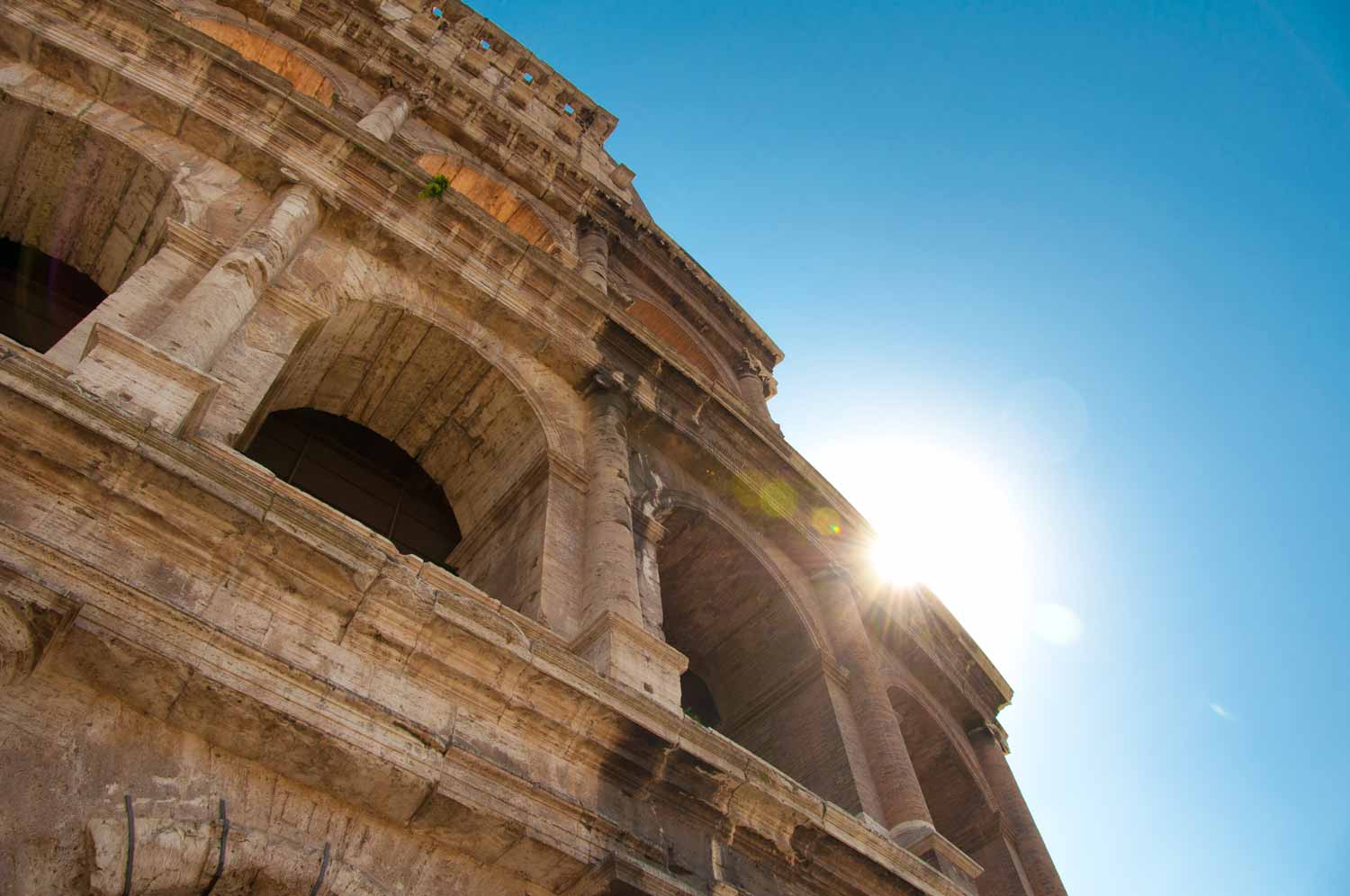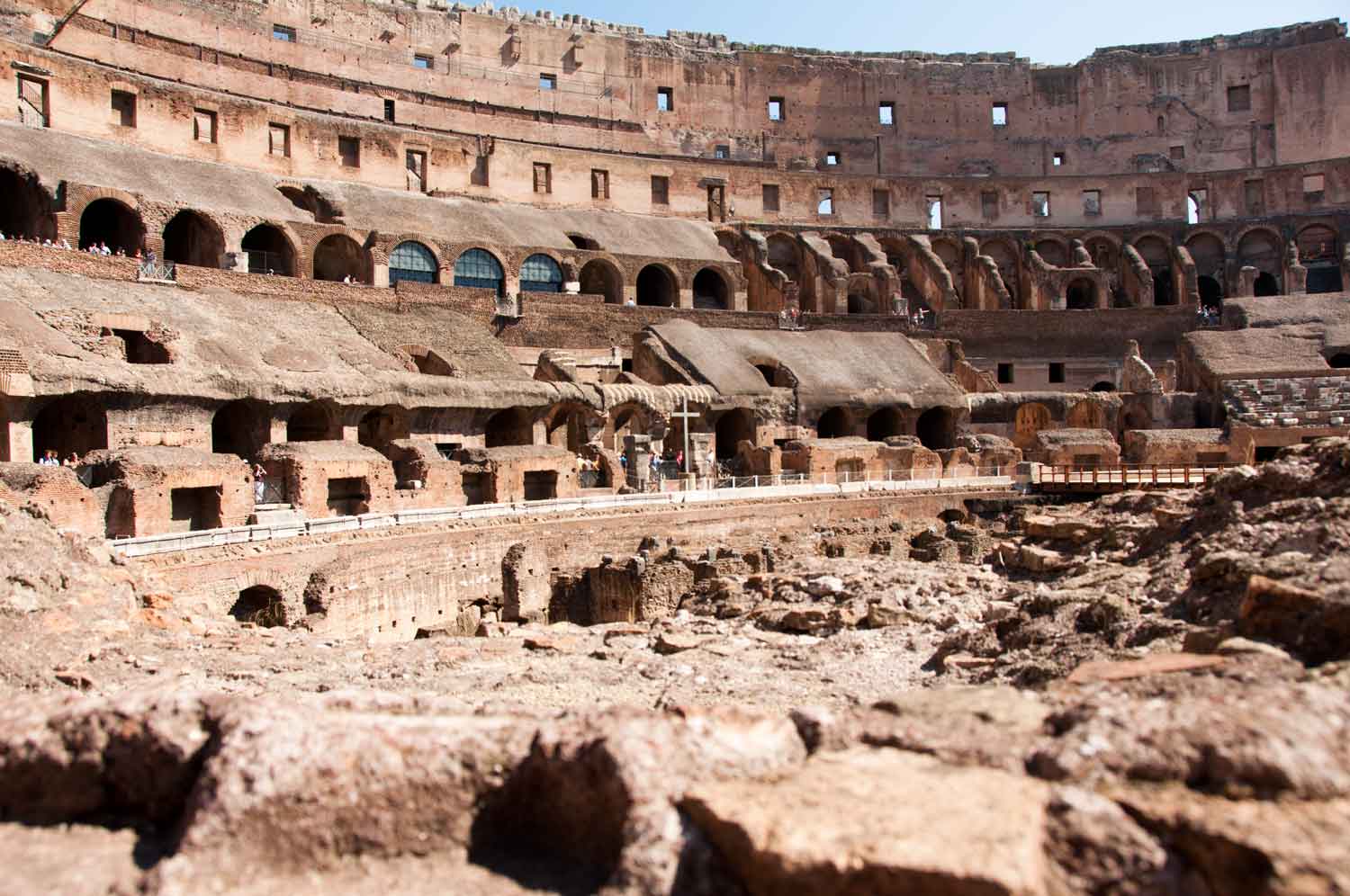The Colloseum and the Art of Recycling
9 Jan 2012

The early morning sun peaks over the Colloseum.
It is difficult to believe that one of the most recognisable structures in the world was once a white elephant, left to sit and waste away before finding value in being pilfered for stone. Such is the life of the Colloseum. In its hey-day, 50,000 blood thirsty citizens could pack this arena to watch men battle men or men battle animals. Exotic beasts would be imported from a far to make up for Rome’s lack of lions and elephants.
For the pièce de résistance, the arena would be flooded with water so that gladiator’s could take to boats and re-inact ancient sea battles. Just like a modern day sports match, the coin toss was crucial; history had already decided who the victor would be and it was in your best interest for history to be on your side.

Looking across the dilapidated arena.
Only a section of the original outer wall remains which gives the iconic silhouette in almost every photo you can see of this old gal. Similar to the great pyramids, stonework and metal reinforcings were stolen throughout the unloved years and used for other construction works which meant that the majority of the wall was of no match for a later earthquake.
On the inside, the missing arena floor gives a view of the labyrinth underneath where the animals would quietly wait until summoned for their part of the show. While most of the arena seating has been destroyed, enough remains to imagine a full house looking for some action. Indeed, much has happened here.